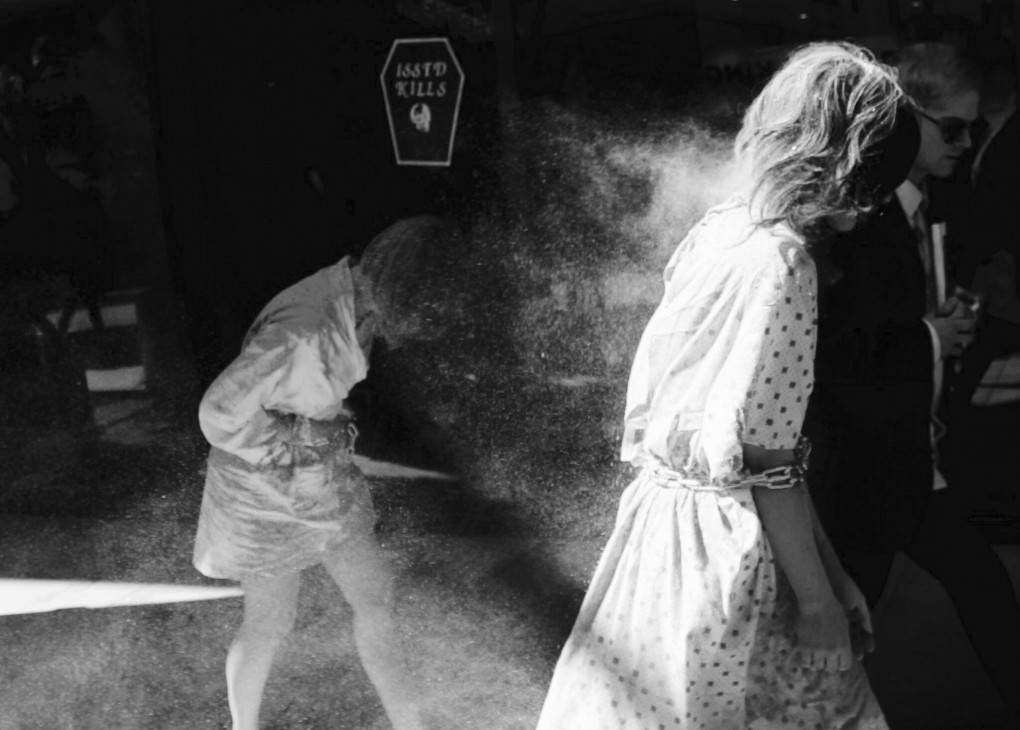First and foremost, we want to thank you for having an open mind and deciding to read this letter. We at Grey Faction in no way see ourselves as your adversary, despite the misconceptions that may exist. If you read further you will learn why.
As the leadership of Grey Faction, we’d like to take this opportunity to be as clear as possible about what we believe, who we oppose, and what our ultimate goal is. We hope you read this letter in full.
In this letter, we wish to share with you our beliefs surrounding Dissociative Identity Disorder (DID), the dangers surrounding the diagnosis and common therapies used to treat it, and the controversies surrounding some of the prevalent researchers and clinicians who claim to be at the forefront of DID research and treatment.
We believe the question of whether DID is “real” or “fake” to be counterproductive. It is impossible to dispute that some people experience the symptoms that characterize DID as codified in the DSM. Therefore, the more important question is: What causes it?
For decades, the dissociative disorders field has unwaveringly subscribed to the trauma model of DID — the notion that DID is a result of trauma, particularly childhood sexual abuse. In fact, since the 80s, many in the field have considered the science settled on this issue — they believe they have figured out what causes DID and how best to treat it. But the trauma model has several shortcomings, including failing to account for a number of factors that appear to contribute to the development of DID. This may be why no empirically-supported treatment for DID currently exists.
Recently, a new theoretical model of DID has emerged which attempts to explain how DID develops, drawing not only from the literature used to support the trauma model, but also from the evidence in favor of a sociocognitive model of DID development. This “transtheoretical” model posits that there are probably multiple pathways to the development of DID, marked by variables such as sleeping difficulties, intrusive thoughts, poor self-regulation, distress, fantasy proneness, trauma, attribution errors (eg, believing a thought or internal voice did not come from you), as well as social and cultural factors. In other words, under this new paradigm, DID isn’t simply caused by trauma, but trauma may be one of several factors that can lead to DID. In fact, DID can develop in the complete absence of trauma.
Organizations like the International Society for the Study of Trauma and Dissociation (ISSTD), whose entire foundation is built upon the trauma model of DID, rightfully see this emerging understanding of the etiology of DID as a significant threat. In fact, the ISSTD has opted to accuse members of the DID community by name of faking their condition rather than recognize the inadequacy of the trauma model. If the ISSTD were to acknowledge that they have been incorrect about the role of trauma in the development of DID, they would be forced to revise their treatment guidelines. After all, if DID can occur without trauma, it makes little sense for therapy sessions to focus on “recovering” and “processing” traumatic memories that may not even exist. In fact, updating their views to align with the state of the science would require that they face the reality that such efforts cause false memories, and this is why we believe the ISSTD will never abandon the trauma model. This is all beside the fact that many people are incorrectly diagnosed with DID in the first place, and then tragically endure harmful therapeutic paradigms that iatrogenically create the disorder.
In short, the ISSTD’s trauma model of DID is bad for people with DID, it’s bad for people incorrectly diagnosed with DID, it’s bad for the falsely accused, and it’s bad for the public at large. Despite decades of efforts, the ISSTD has failed the DID community in spectacular fashion. It’s time for a more holistic understanding of DID to move to the forefront, an understanding that leads to evidence-based treatments, reduces negative side effects like false memories, and at the very least doesn’t foster an environment where its proponents feel comfortable bullying members of the DID community for straying from outdated expectations.
For years we have exposed the myriad ways in which the ISSTD causes harm to patients, including those diagnosed with DID. It is no wonder they wish to paint us as your enemy, but nothing could be further from the truth. We think you deserve better than the ISSTD.
This call for change within the dissociative disorders field aligns closely with our strong desire to see empirically-supported treatments prevail over pseudoscience and conspiracy theories.
We believe that everyone should have access to mental health care that is effective, safe, and evidence-based. That means we oppose forms of therapy that are ineffective, dangerous, and based in pseudoscience. These include recovered memory therapy — a cornerstone of DID treatment, but also used on patients with other diagnoses — and conversion therapy. As a campaign of The Satanic Temple, we primarily focus on all forms of recovered memory therapy: any method, including but not limited to hypnosis, sodium amytal interviews, dream interpretation, and guided imagery, used for the purpose of recovering memories of forgotten trauma. These methods have been shown to produce false memories in support of Satanic Panic conspiracy theories. These false memories harm patients, families, and communities — and paint targets on the backs of us Satanists.
The Satanic Panic was an era during the ’80s and ’90s in which many believed that abusive Satanic cults were lurking around every corner, successfully infiltrating daycares, churches, the police — every institution in existence. Some claims of abuse, often coaxed out of children by fearful parents and overzealous social workers who nonetheless meant well, moved quickly from mundane, tragic, and credible, to downright bizarre — featuring men in robes, pentagrams, child sacrifices, cannibalism, and blood drinking. In parallel, some therapists were using recovered memory techniques on adult patients to recover similar memories of Satanic crimes.
When numerous investigations into these alleged Satanic cults collapsed under the complete absence of evidence, most people — including licensed professionals within the mental health field — moved on. Some, however, have not.
There are mental health practitioners, particularly within the dissociative disorders field, who still believe that these cults are out there, abusing thousands or even millions of victims, yet managing to leave no trace of their activities — except in the repressed or dissociated memories of psychiatric patients. Some of them openly believe these cults have infiltrated the highest levels of government, that they run the world as part of the Illuminati, and/or that the CIA, the Freemasons, and whoever else are somehow involved.
We hold the uncontroversial view that these conspiracy theories are not true. There are no large, underground, abusive Satanic cults, even if there are individuals who engage in criminal acts and claim to do so in the name of Satan. Satanists don’t run the world. Extraordinary claims, including those of cult ritual abuse derived from memories recovered in therapy, require extraordinary evidence. People have recovered memories of alien abduction and past lives through the exact same therapy that the ISSTD tells DID patients is a safe way to recover memories of abuse; if one is to doubt these claims without corroborative evidence, one must acknowledge that recovered memories are not reliable in general.
We also believe that mental health practitioners who subscribe to these conspiracy theories present a danger to their patients and the public at large. Individuals who enter therapy with such a therapist can — and often do — end up believing their family is involved in a multigenerational cult, that they’ve been abused all their lives, that they were forced to participate in murders and cannibalism, and all sorts of other disturbing things. This type of therapy tears families apart, can be extremely traumatizing for the patient, and can result in innocent people being locked up for horrific crimes — just as it did during the ’80s and ’90s. The damage is often permanent.
While these cases of implanted memories of Satanic ritual abuse are tragically numerous, it’s far more common for therapists to use the same dubious methods to unintentionally foster false memories of horrible events that are not so obviously untrue, such as sexual abuse perpetrated by a patient’s relative when they were very young. The typical scenario involves a patient entering therapy with a therapist who believes unremembered trauma can manifest in the symptoms experienced by the patient. The therapist uses one or more of a number of recovered memory techniques, or even simple suggestions, to try to help the patient “remember” what happened to them. Sometimes, these patients have pre-existing memories of childhood abuse before entering therapy, but they are told by their therapist that there must be more. Therapists generally do not understand how easily they can implant false memories, and patients typically feel highly confident in the memories “recovered” with these techniques. While many patients with false memories of Satanic ritual abuse come to realize their memories were not true, many patients with false memories of events that actually do happen (but which did not happen to them) will never have such a realization.
We believe that mental health practitioners attempting to surface “repressed” memories of trauma are engaging in malpractice. Ironically, we believe that these patients have been abused — by the therapists themselves. We demand licensing boards and the American Psychological Association hold them accountable, and make it clear that conspiracism and pseudoscience do not belong in therapy.
If you’ve experienced false memories of traumatic events as a result of therapy, understand that none of this is your fault, and it can happen to anyone subjected to therapy meant to recover “forgotten” memories of trauma. And even if you’ve been convinced of traumatic events that never happened, your suffering and fear are still real. If you’ve previously accused someone of abuse but have come to doubt those memories, it is never too late to reach out to them. Importantly, you are not alone. Our campaign leadership includes victims of ISSTD therapists and other unethical practitioners.
Grey Faction is a social justice campaign. We advocate for better mental health care based on rigorous science. We aim to help patients victimized by unaccountable therapists who subscribe to pseudoscience and harmful conspiracy theories — even those patients who believe us to be their enemy.
We appreciate you taking the time to learn more about us. If you would like to share your experience, or have any comments, concerns, or additional questions, you can use our contact form to get in touch with us directly. You are especially welcome to contact us if you’ve endured the kind of therapy described above and would like to be connected with others with similar experiences.
Sincerely,
Grey Faction Leadership

